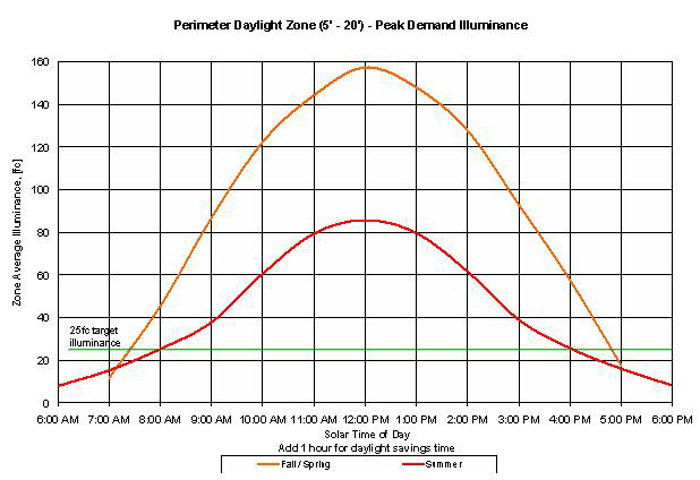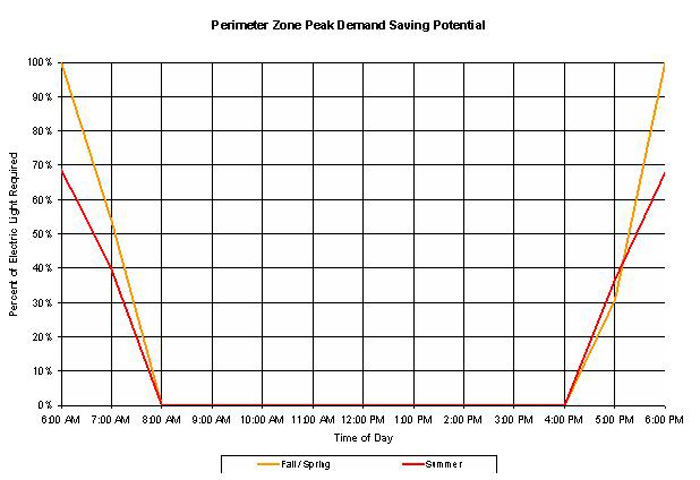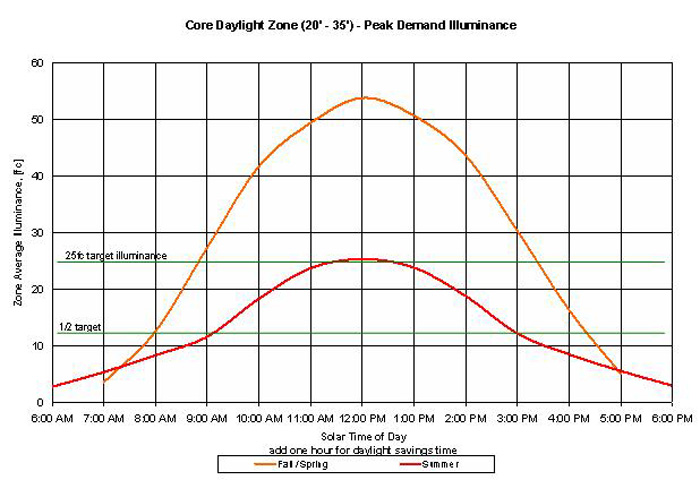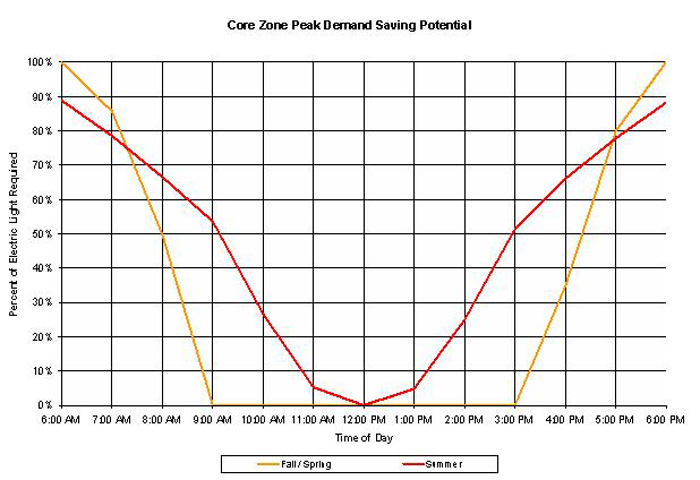Summer Peak Demand
Plots of peak demand from a late summer day answer the question, “How much can the LightLouver Daylighting System reduce summer electrical peak demand?” This is an important question because most electrical utility companies bill their commercial customers for both energy consumption (kWh) and for peak demand (kW). The savings potential increases if a strategy, like daylighting, can reduce both energy and peak demand. The amount of peak demand reduction that can be achieved depends on the type of strategy employed to control the electric lights and the logic in the control system to “ride out” certain events, like dark skies due to thunderstorms, to achieve maximum peak demand reduction. Below are four figures illustrating key conditions the peak demand period. Two figures show the illuminance contribution during peak demand times (typically end of summer in August) for the perimeter and core daylight zones. The next two figures show the electric lighting savings potential during these peak summer months. For conditions with high daylight saturation, on/off control which only turns lights off when adequate illuminance from daylight is available in the space will suffice and save significant energy. For conditions like the core daylight zone with a moderate level of daylight saturation, significant energy savings can be achieved using one of the following two strategies: Bi-Level Switching, which turns off half the lights when illumination requirements can be met by available daylight, or Continuous Dimming, which adds just the right amount of electric light to the daylight to meet the illumination requirements of the space.




To download a PDF of the information presented above, pleae click the following link:
